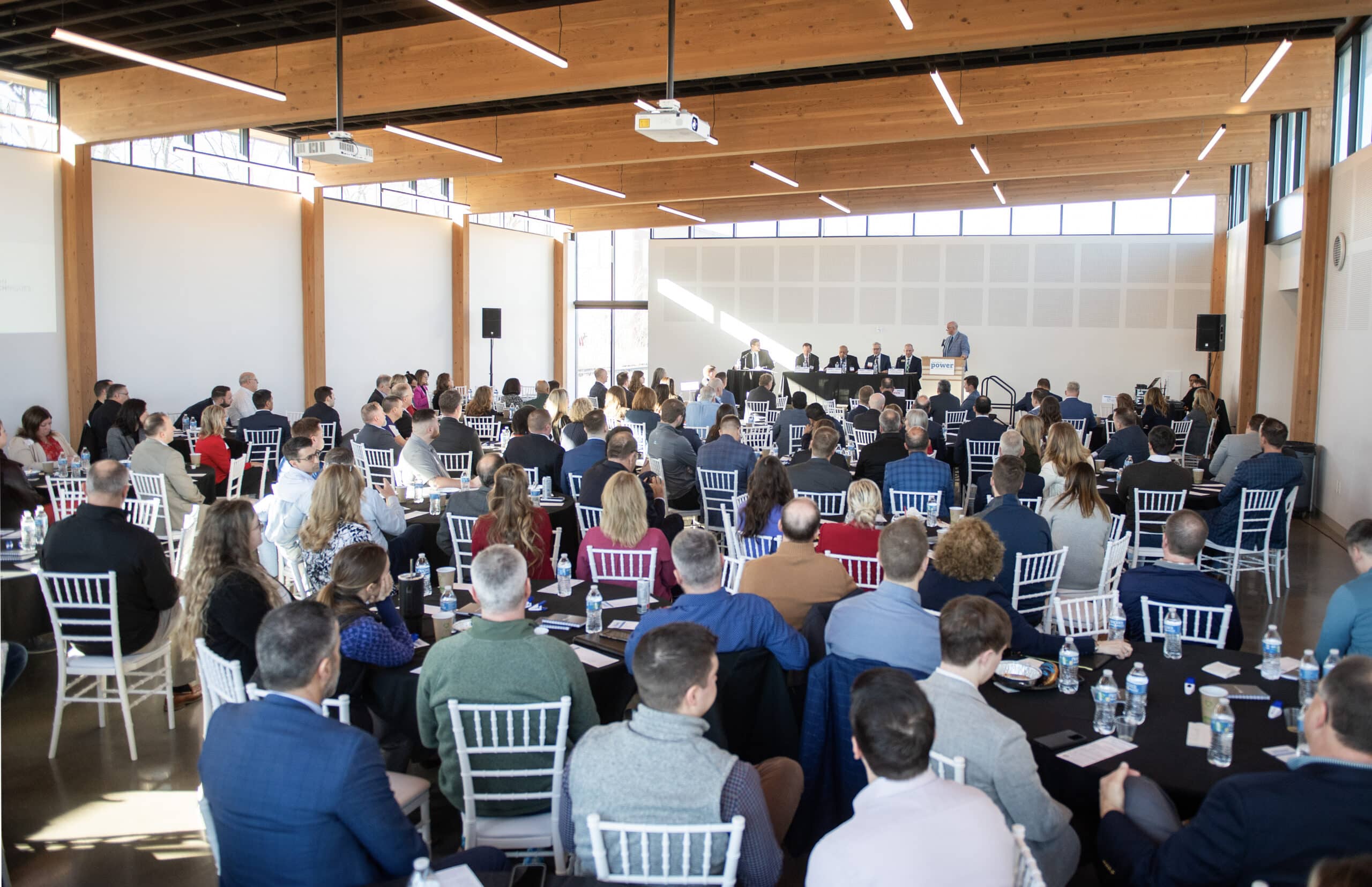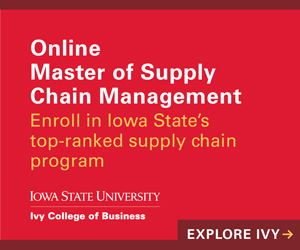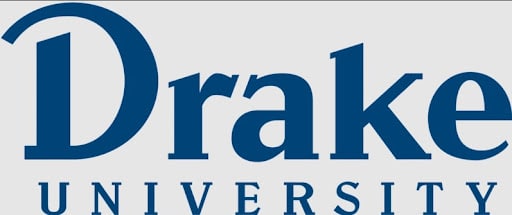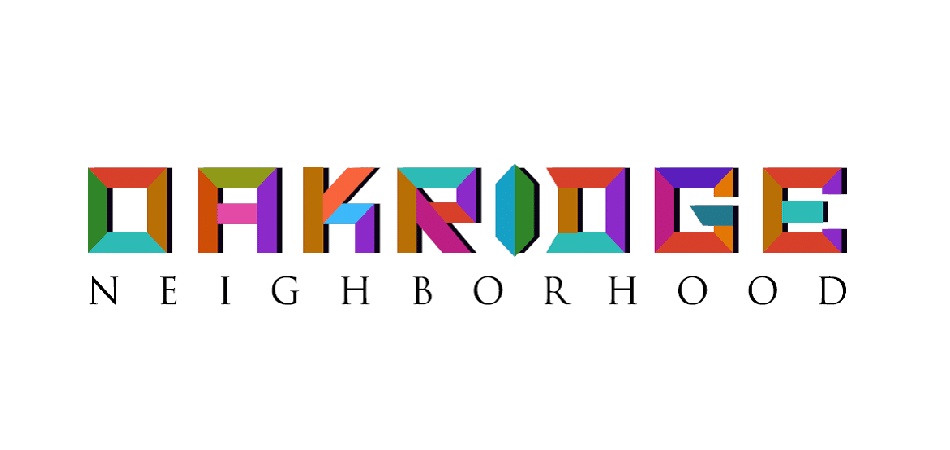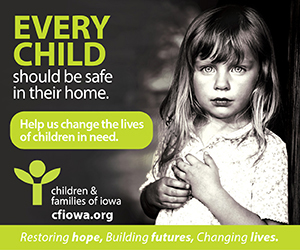10 takeaways from banking, lending Power Breakfast

Business Record Staff Feb 20, 2024 | 11:04 am
8 min read time
1,884 wordsAll Latest News, Banking and FinanceIowa banking and lending experts shared cautious optimism on the outlook for interest rates, access to capital and commercial real estate lending during the Business Record’s first Power Breakfast of 2024 on Feb. 15.
The panel discussion at the Des Moines Heritage Center also focused on AI in banking and federal regulations, lending for new small businesses and underbanked people, and the relationship between commercial lending and housing affordability in the current market.
Panelists included:
- Don Coffin, president and CEO, Bankers Trust
- Vince Lintz, executive director, One Economy Financial Development Corp.
- John Sorensen, president and CEO, Iowa Bankers Association
- Murray Williams, president and CEO, Iowa Credit Union League
Here’s what our reporters took away from the conversation.
Good projects still moving forward
The U.S. economy emerged from the upheaval caused by the pandemic scarred but not broken, Coffin said. Still, the commercial real estate market is facing headwinds, he said. “I think business is still strong, in general. I think consumers are still confident. Inflation is still out there … but it’s dropped considerably. We’re on a good path. Some developers have slowed down projects, but good projects are still getting done. [Developers] might be taking on more capital because of interest rates being where they are and they might have to adjust costs because [prices of materials] have gone up tremendously. But in general, I think the attitude is positive.”
— Kathy A. Bolten
‘Tsunami’ of regulations
The cost to operate a financial institution has increased significantly in the past year, Sorensen said. Most of the cost increases are due to more regulations, he said. “It used to be that financial regulators were very independent. … I’m not saying it’s one side or the other [but] political agendas have entered into the financial services world more than I’ve seen in my career. We have an election coming up this year. A lot of the regulators have given us a tsunami of new regulations. … Those are the kinds of things that cause us to not only deal with a very interesting economic and interest-rate environment but also trying to implement thousands of pages of new regulations that were issued last year.”
— Kathy A. Bolten
Housing affordability
The National Association of Realtors’ preliminary Housing Affordability Index was 95.8 in 2023’s fourth quarter. The index measures the ability of a typical family to afford to buy a median-priced home. An index below 100 means that a median-income family lacked the financial means to afford a median-priced home. “The index has been as bad as I’ve seen it in a long time,” Sorensen said. “Eventually, if [interest] rates come down, we can start to make some real progress on housing affordability. Until then, we’re just going to have to be creative with ways” to make housing more affordable.
— Kathy A. Bolten
The current mood of banks and credit unions
Williams said among Iowa’s credit unions there is “always optimism,” but recently some credit union leaders shared that this is one of the most challenging times to try to budget and forecast for the future. The higher interest rates are making consumers more cautious about borrowing, and for Iowa credit unions, whose portfolios are mostly made up of consumer loans like mortgages, that makes liquidity difficult, Williams said. Sorensen said the mood of the banks is similar given the current interest rates and that banks are affected similarly to the way other businesses are. “Think of a bank as a manufacturing company. They manufacture financial products and services, they package those and then they distribute those products and services,” Sorensen said. “Sometimes they work with fintechs or other companies to help distribute those products and services, but they’re not unlike any of your businesses. You have a cost of goods. Our cost of goods is what we have to pay for funding.”
— Sarah Diehn
Disparities in banking, access to capital
Lintz shared that 25% of Black residents in Polk County do not have a relationship with a bank, and another 30% have a bank account but don’t engage in other services at their lending institution. He said One Economy Financial Development Corp., which provides small loans to people who are trying to start a business or startup, works with clients who often have low credit scores due to putting their limited income toward essential expenses. “They may have a credit score of 600, which most lending institutions wouldn’t touch, but if you look at that individual’s third-party credit like rent, other expenses, utility bills, and they don’t have any lates or anything in those situations, it’s not like they’re uncreditworthy, it’s just that they don’t have the resources,” Lintz said. According to the 2014 One Economy report done by the Directors Council, which was updated in 2017, there was a $30,000 disparity between the household income of the average family in Polk County and the average African-American family in the county, Lintz said.
— Sarah Diehn
Introducing AI in Iowa financial institutions; expectations on regulation
For banks and credit unions, artificial intelligence has so far played a role in improving efficiency on the back end in areas such as compliance or payables and receivables, panelists said. Sorensen said AI requires a “new regulatory scheme” to create consistency for banking and business in general, but doesn’t anticipate specific action from the U.S. Congress soon.
“Our regulators are certainly looking at it now and making sure that it’s used in an appropriate way,” Sorensen said. “A lot of the uses are back room, they’re not customer-facing at this point in time. I think most of our industry is being careful about how we’re using it.” Coffin said he thinks regulations for AI will “mirror whatever we can control.” “If we can control the risk, and we can control the data, if we control personal information, we can control that and make sure that we know what the AI is seeking out and what it’s making decisions on,” Coffin said. “Then the regulations part becomes a lot easier. I don’t think they can impose regulation without knowing what the control piece is, so it’ll be a mixed bag.”
— Sarah Diehn
On risk, Iowa banks ‘well capitalized,’ have ‘adequate liquidity’ moving into 2024
Sorensen said the most significant of the three prominent regional bank failures in the U.S. in 2023, Silicon Valley Bank, had a unique business model that served the tech industry and relied on venture capital funds to raise a lot of its capital. As interest rates rose, that made the capital harder to get, he said.
Despite the Santa Clara, Calif.-based Silicon Valley Bank’s niche clientele, Sorensen said its failure caused Iowa banks to have to reassure their customers. “[It] obviously shook up the marketplace. When we had that increase in interest rate, we also saw people who would get their deposit accounts [and] think, ‘OK, am I with a healthy institution? Am I getting the best return on my deposits?’” Sorensen said. “So a lot of our members spent a good deal of time reaching out to their business and consumer customers assuring them that their bank is healthy and strong. And I can tell you in Iowa our banks are very well capitalized, they have adequate liquidity today. Our credit quality is exceptional.”
Coffin agreed that the credit quality of Iowa banks is stable. He said the bank failures of 2023 were also caused by the concentration of assets in one or a few sectors. For banks inside and outside of Iowa that witnessed the fallout from those failures, Coffin said managing risk in the current market is “all about concentrations.”
“Are you focused in office buildings? Are you focused in multifamily? What are your concentrations in all of these various types of real estate? What is your concentration in the commercial industrial world? Are you all in one industry or are you not? Are you more heavily weighted in geography? … That’s really what yields the problems when you have a bulk of your assets tied up in one of those areas and something happens in that particular industry that causes a downside.”
— Mike Mendenhall
‘Soft landing’ as interest rates drop slowly; optimism for the underbanked
Iowa businesses will have a strong year in 2024, not as a result of the interest rate environment but in spite of it, Coffin said. According to a Feb. 13 CNBC report, the Federal Reserve has indicated consumers and businesses should not expect interest rates to drop until at least the spring. The Fed raised interest rates 11 times from March 2022 to July 2022 to a target range of 5.25% to 5.5% in an attempt to tamp down inflation, according to CNBC. Coffin said he expects interest rates will remain higher for longer than previously predicted at the end of 2023.
“I don’t necessarily think that’s a bad thing,” Coffin said. “It’s not great for our [banks’] income. But I think equilibrium will adjust in terms of prices and cap rates.”
Sorensen said that interest rates will “trail downward” in the second half of 2024 and expects the economy to have the “soft landing” desired by Fed officials. Lintz anticipates nonprofit financial services organizations to make gains in 2024 on efforts to build better relationships with lending institutions to aid new small businesses, unbanked, underbanked and underserved communities statewide.
— Mike Mendenhall
Iowa’s low rate of unbanked persons a result of state’s competitive banking environment
Iowa is unique because of its number of banks, Sorensen said. Iowa has 275 member financial institutions with 1,500 locations across Iowa, and that has helped build those relationships with customers in those communities, leading to higher rates of financial literacy, he said.
By comparison, most states have around 50 banks, most of them being larger institutions, Sorensen said.
“We have one of the lowest rates of unbanked population in the country, 3%, based on an FDIC study,” he said. “Iowa State University did a study recently that indicated if you are in a community where there is a bank on the corner, the people are more financially literate because you have that relationship. I think Iowans are so very well served because of the competitive environment we have here.”
— Michael Crumb
Addressing needs of vulnerable communities is area of focus for credit unions
Williams said the Iowa Credit Union Foundation’s “Economic Realities of Communities of Color in Iowa” report released last year shares some sobering data, including that 73% of white Iowans are homeowners, compared to just 53% of Hispanic Iowans and 23% of Black Iowans.
As a result of the report’s findings, credit unions across Iowa have committed to taking 10% of their assets over 10 years and put them toward more affordable home loans for people of color.
“For our largest institution, that is about $1 billion in affordable home loans over a 10-year span,” Williams said. “Part of it is just putting a spotlight on it and part of it is just getting to work and nobody can do it alone, so the community partnerships, economic development groups, we all need to get together to make sure those things happen.
Williams said that while Iowa is “doing well as a whole, that’s not necessarily the same for everybody.”
— Michael Crumb

